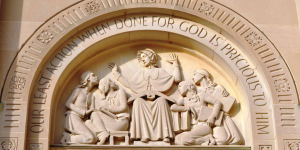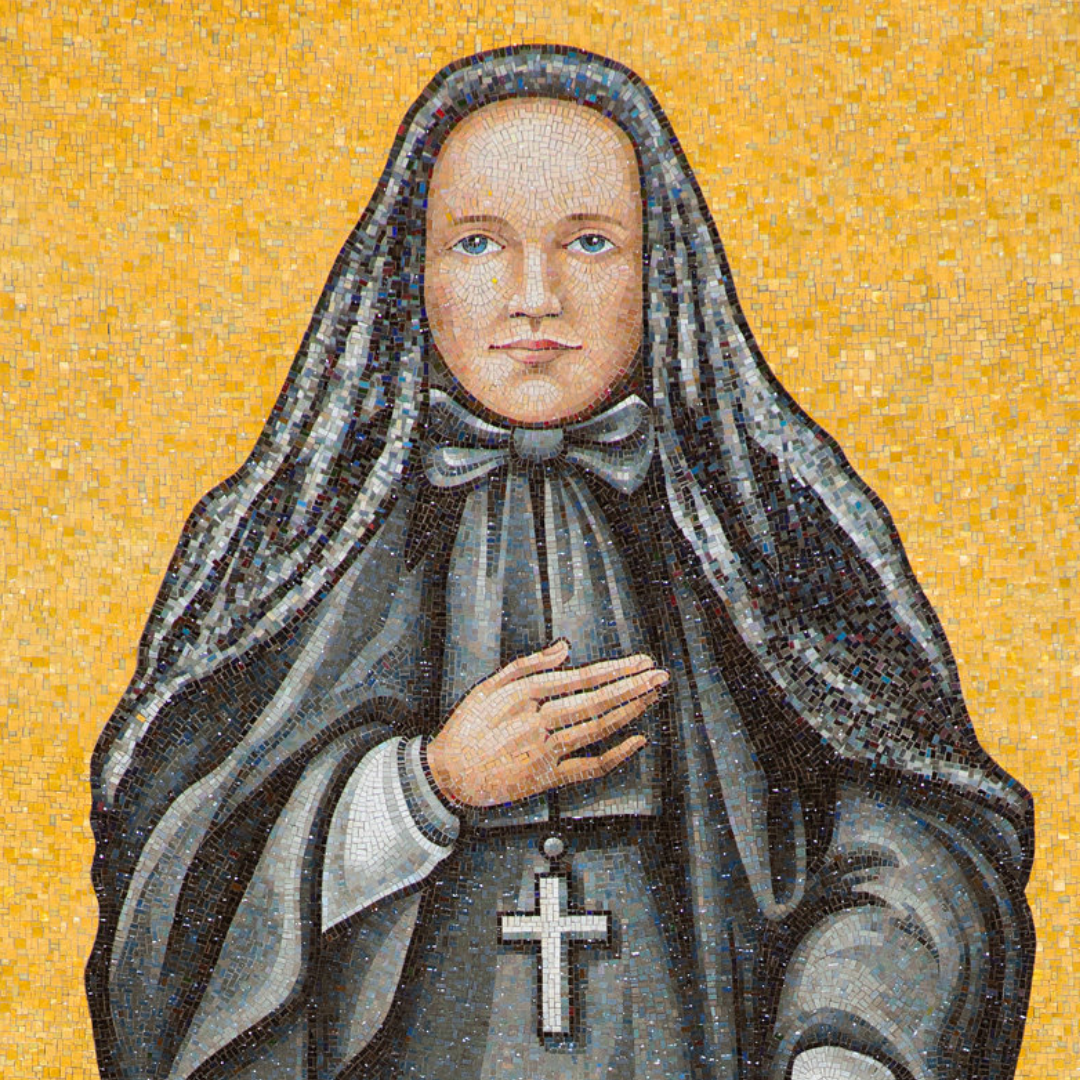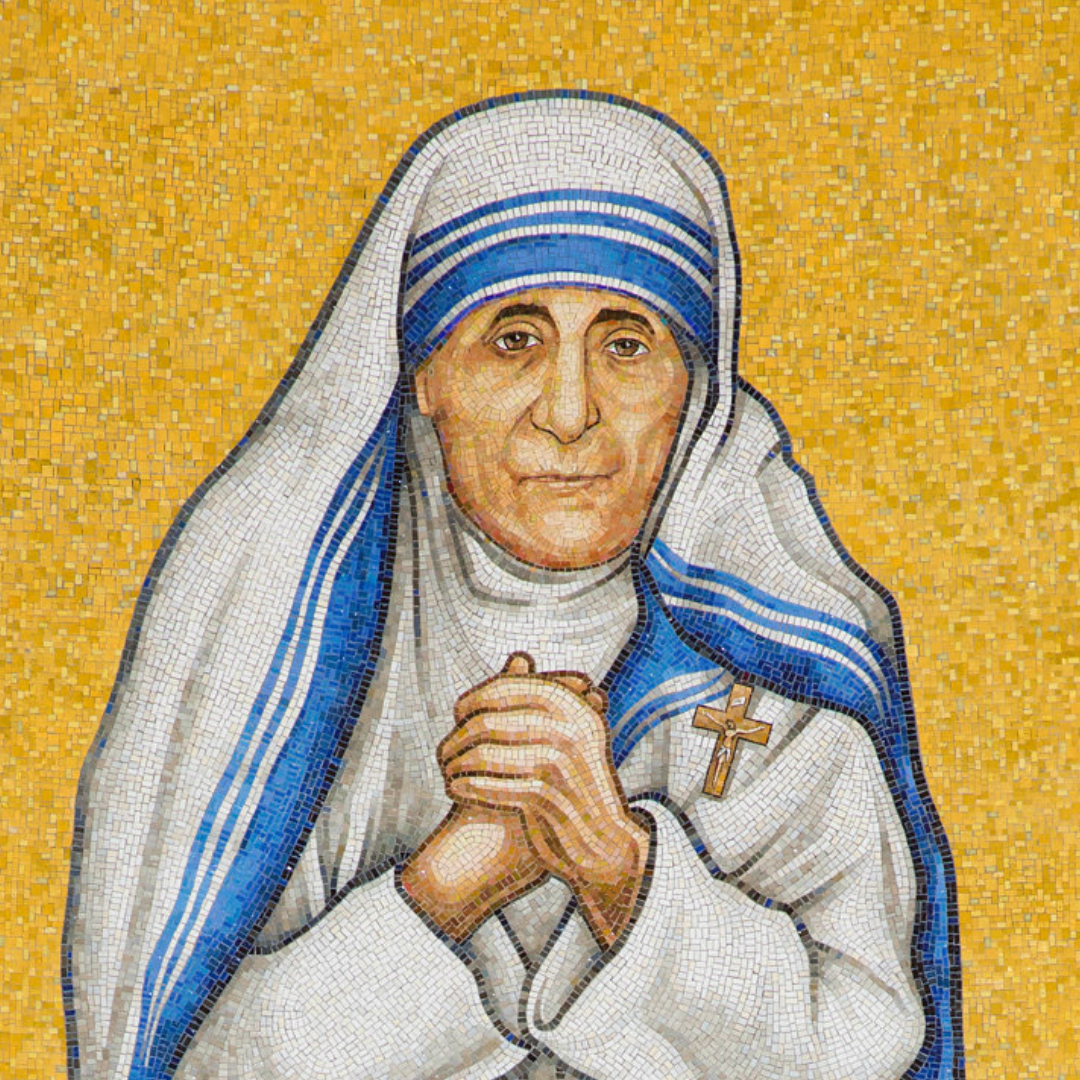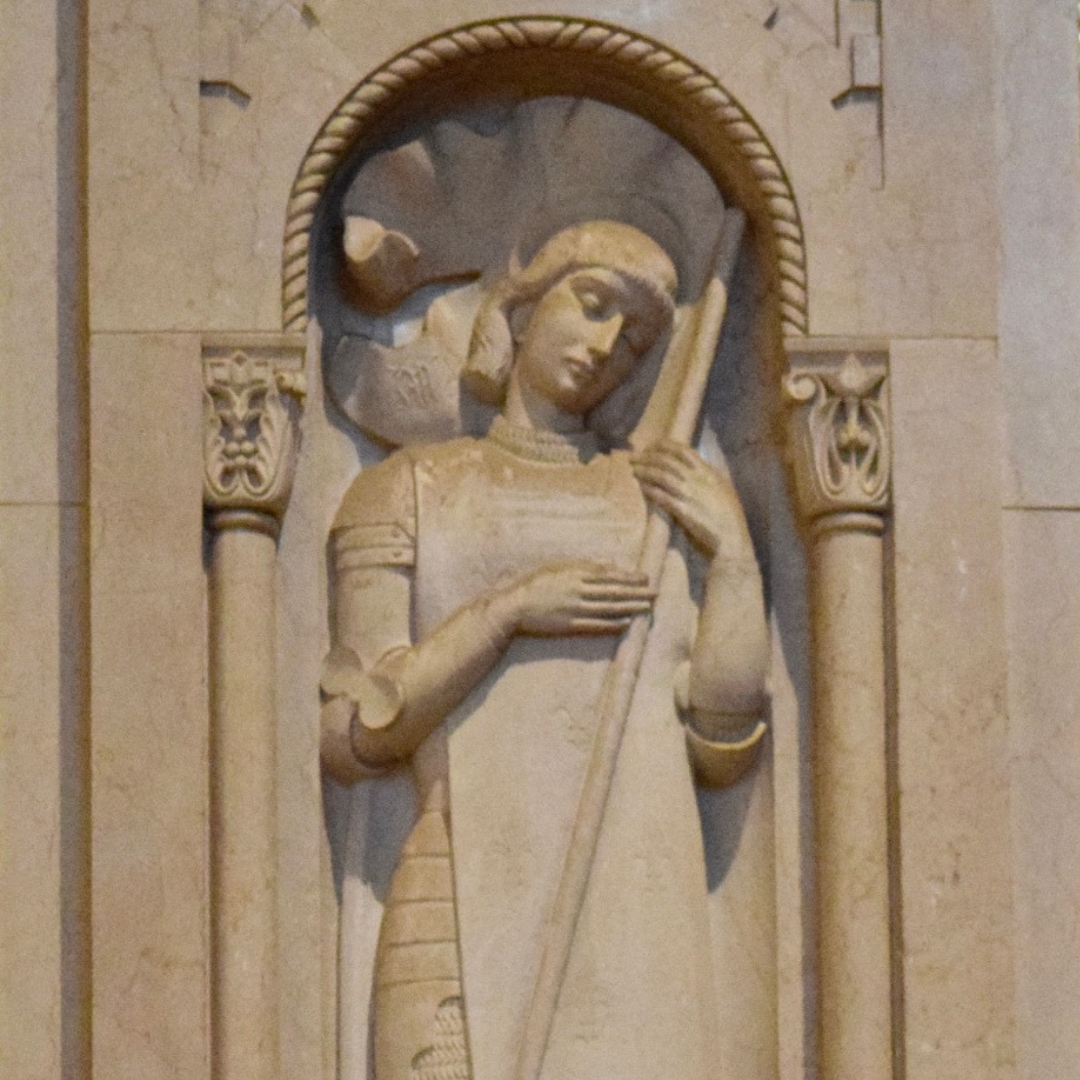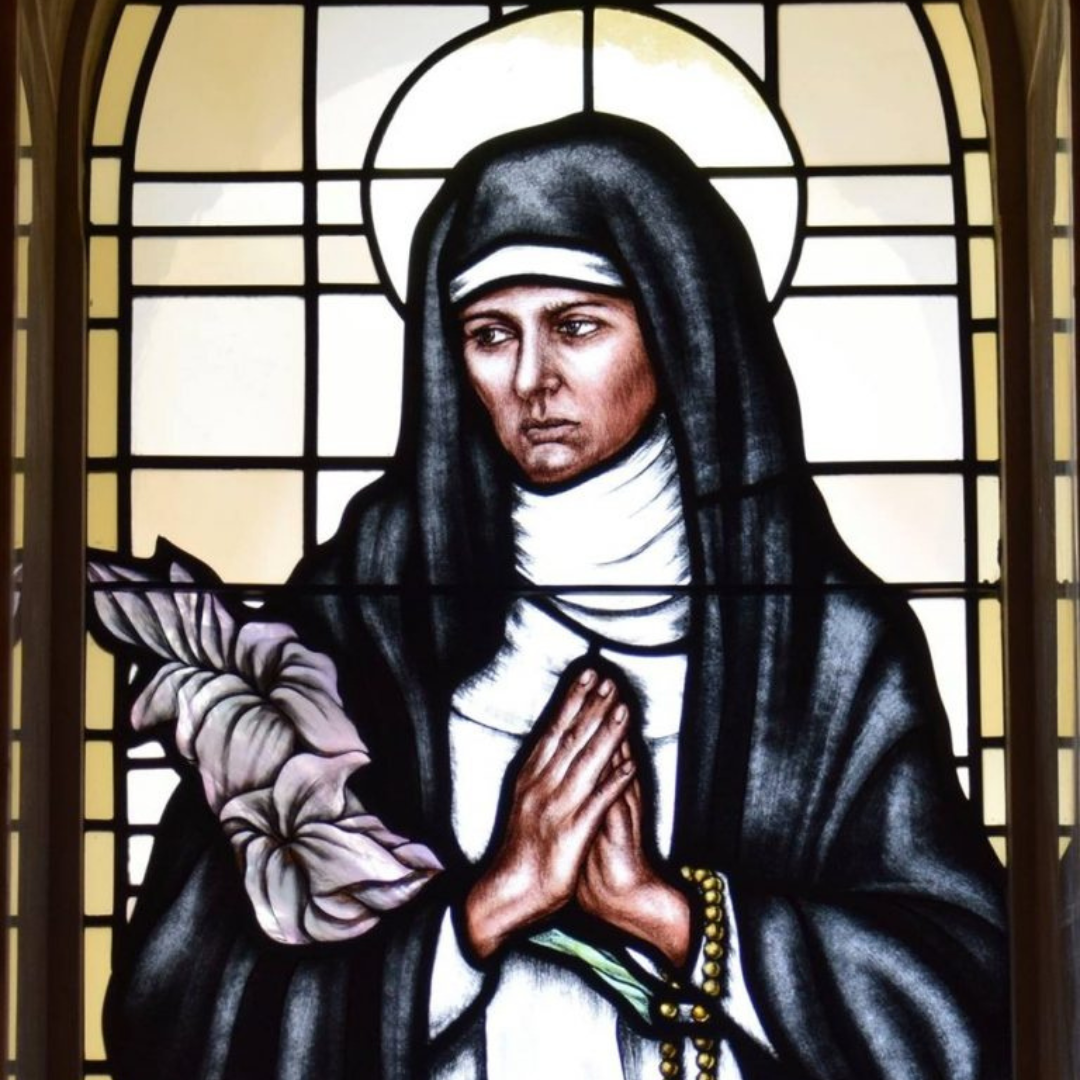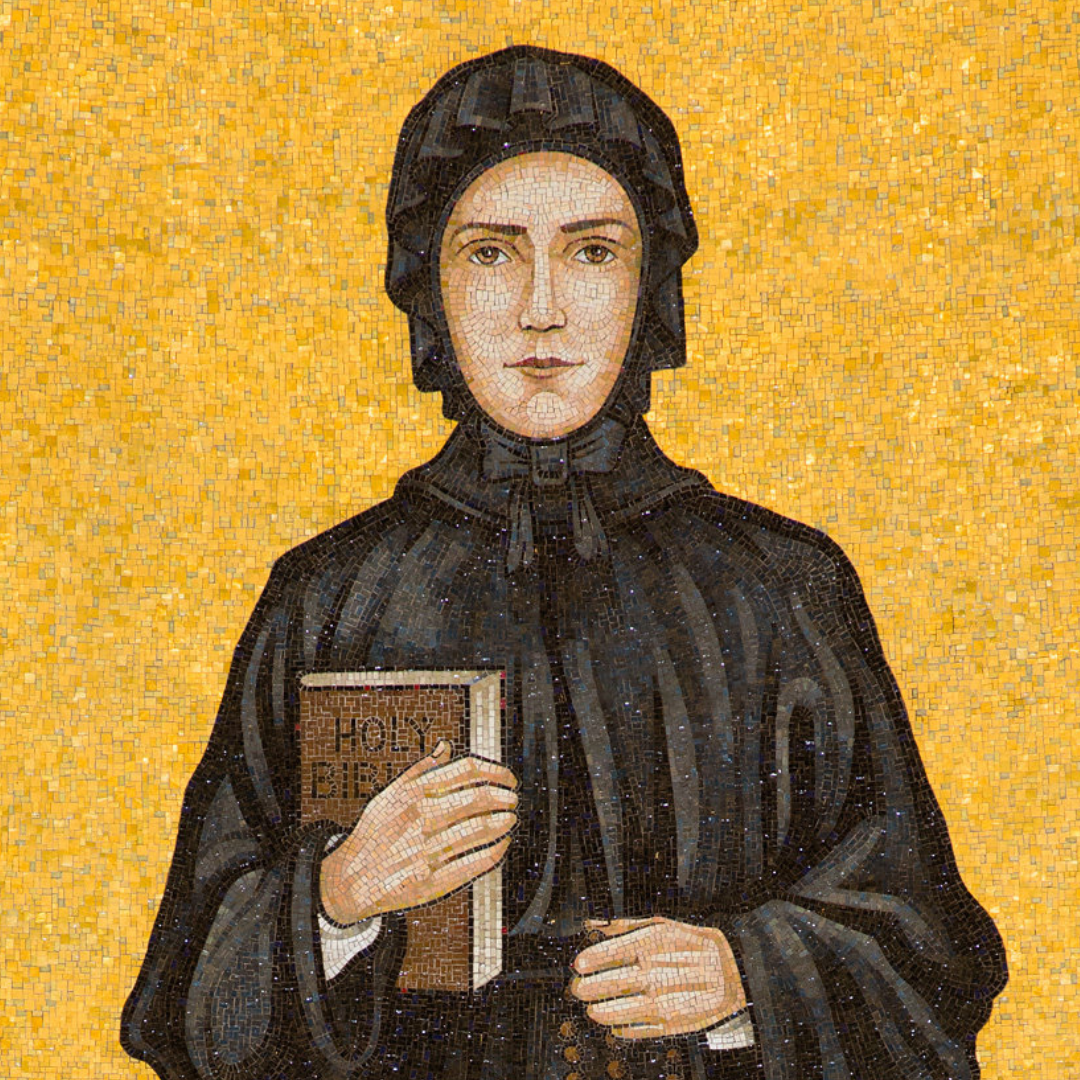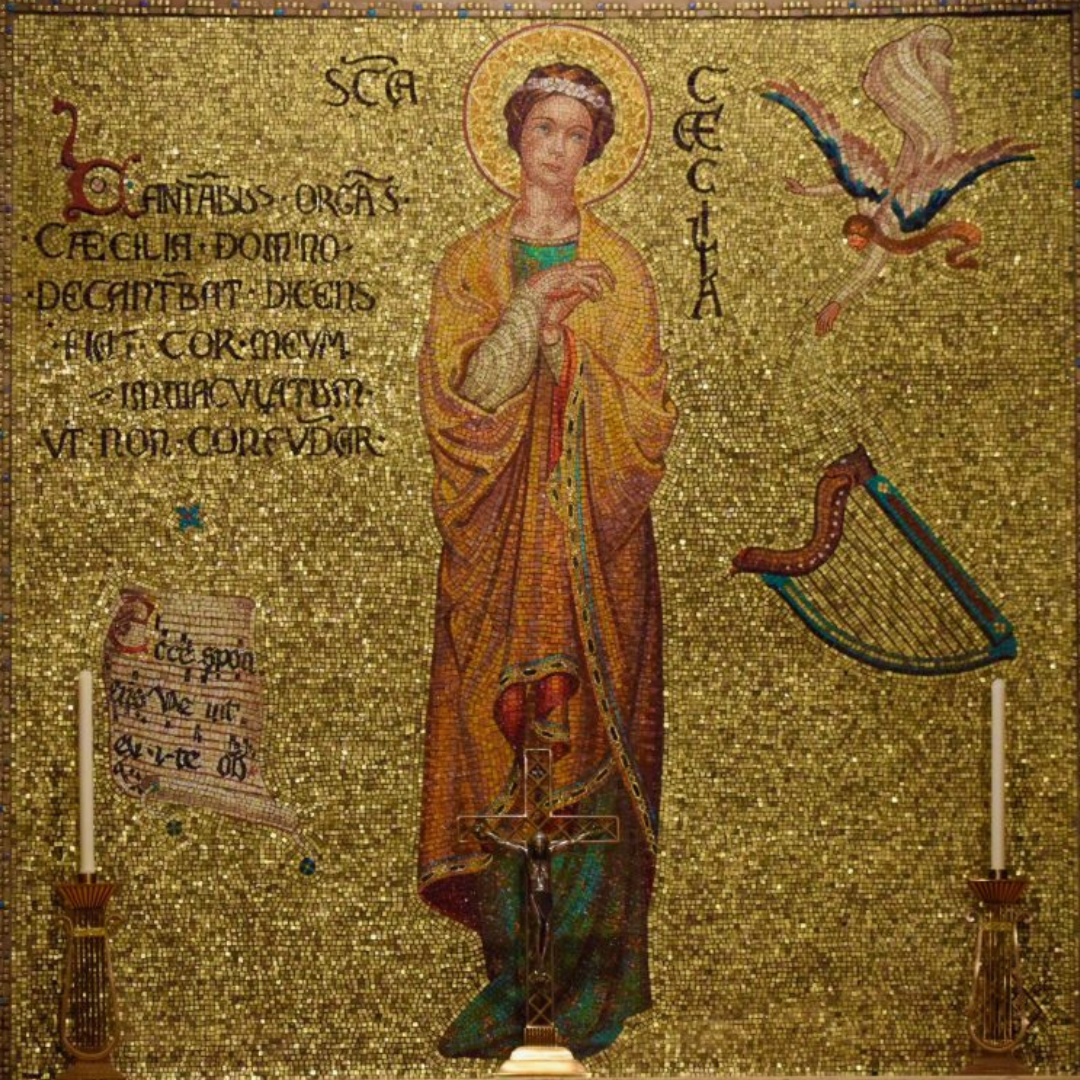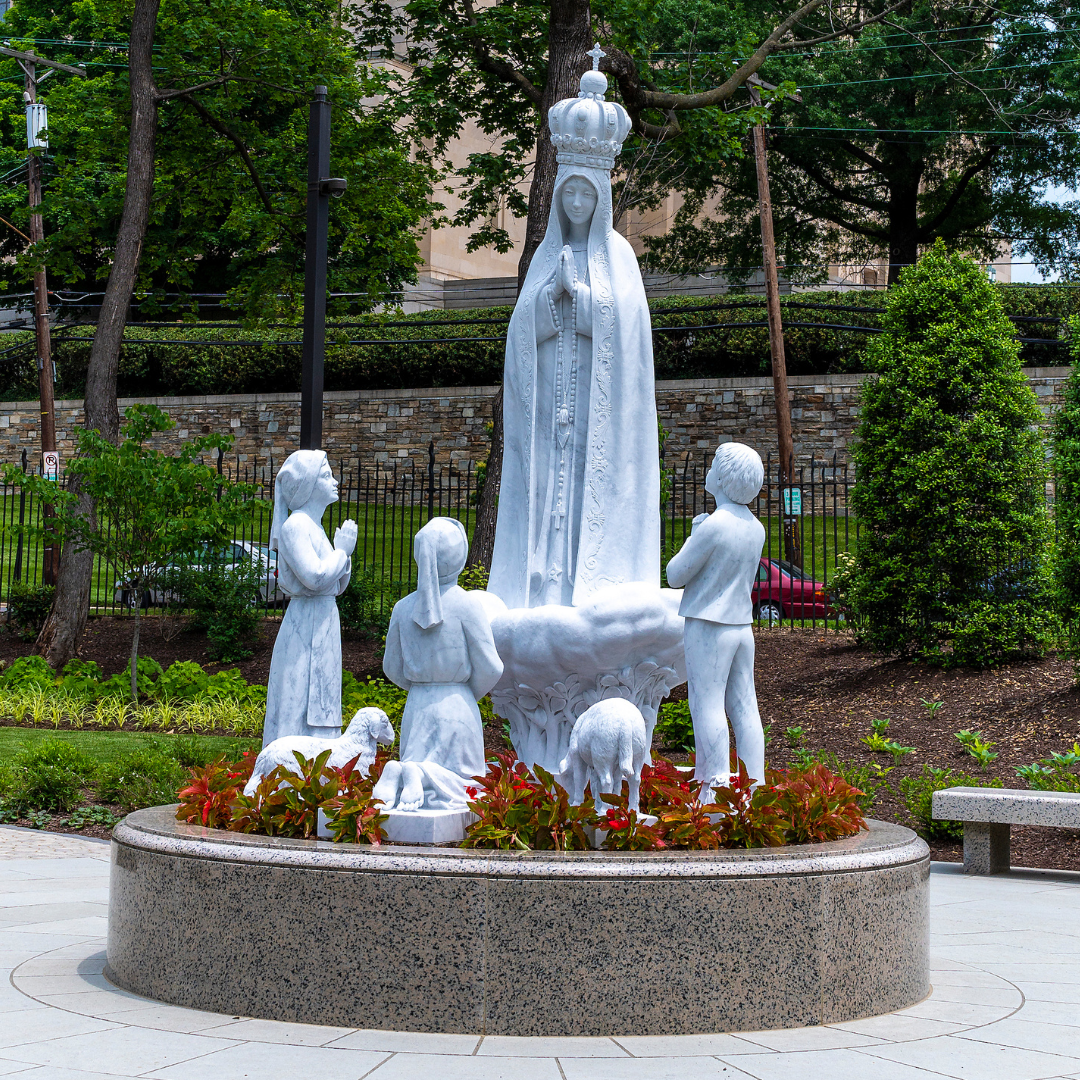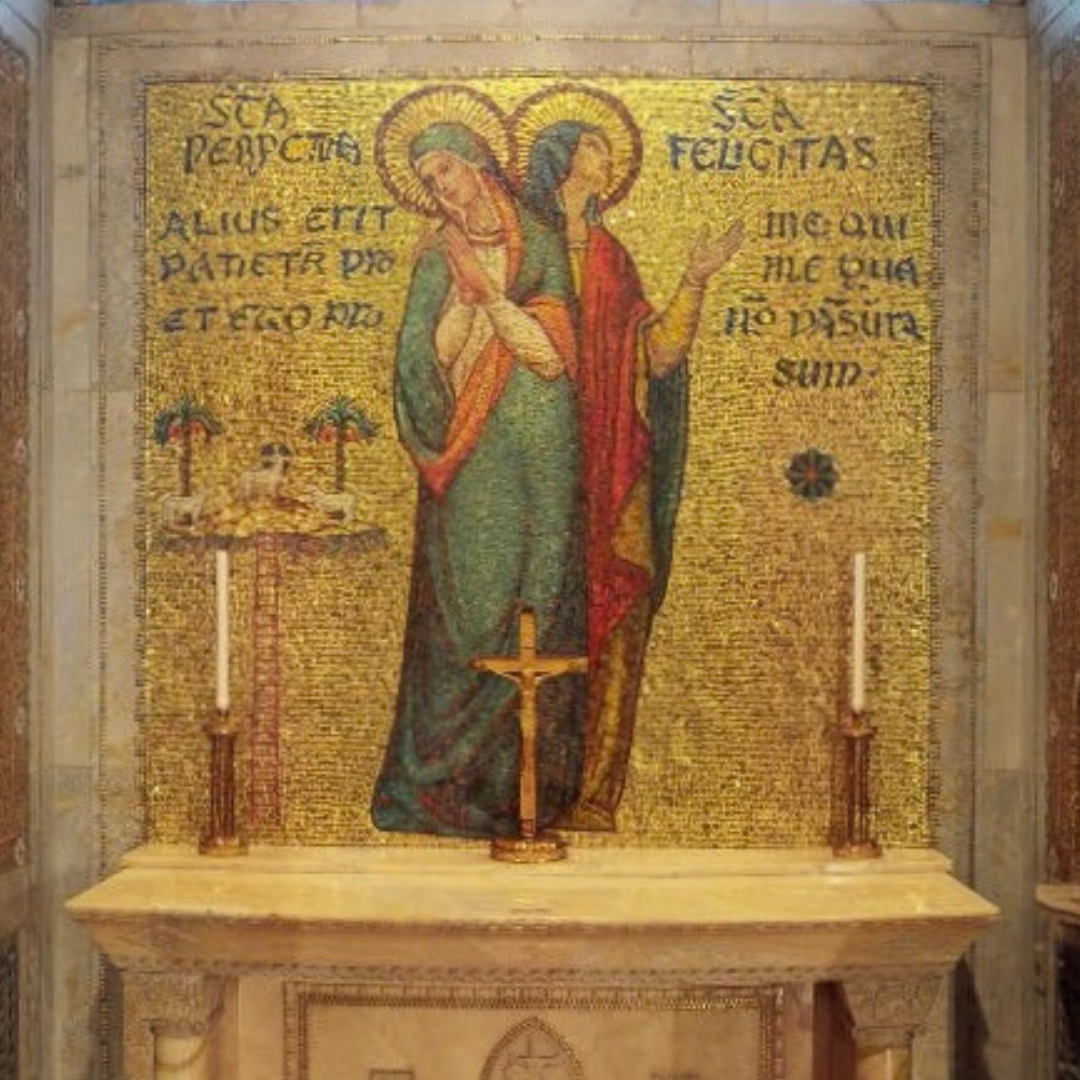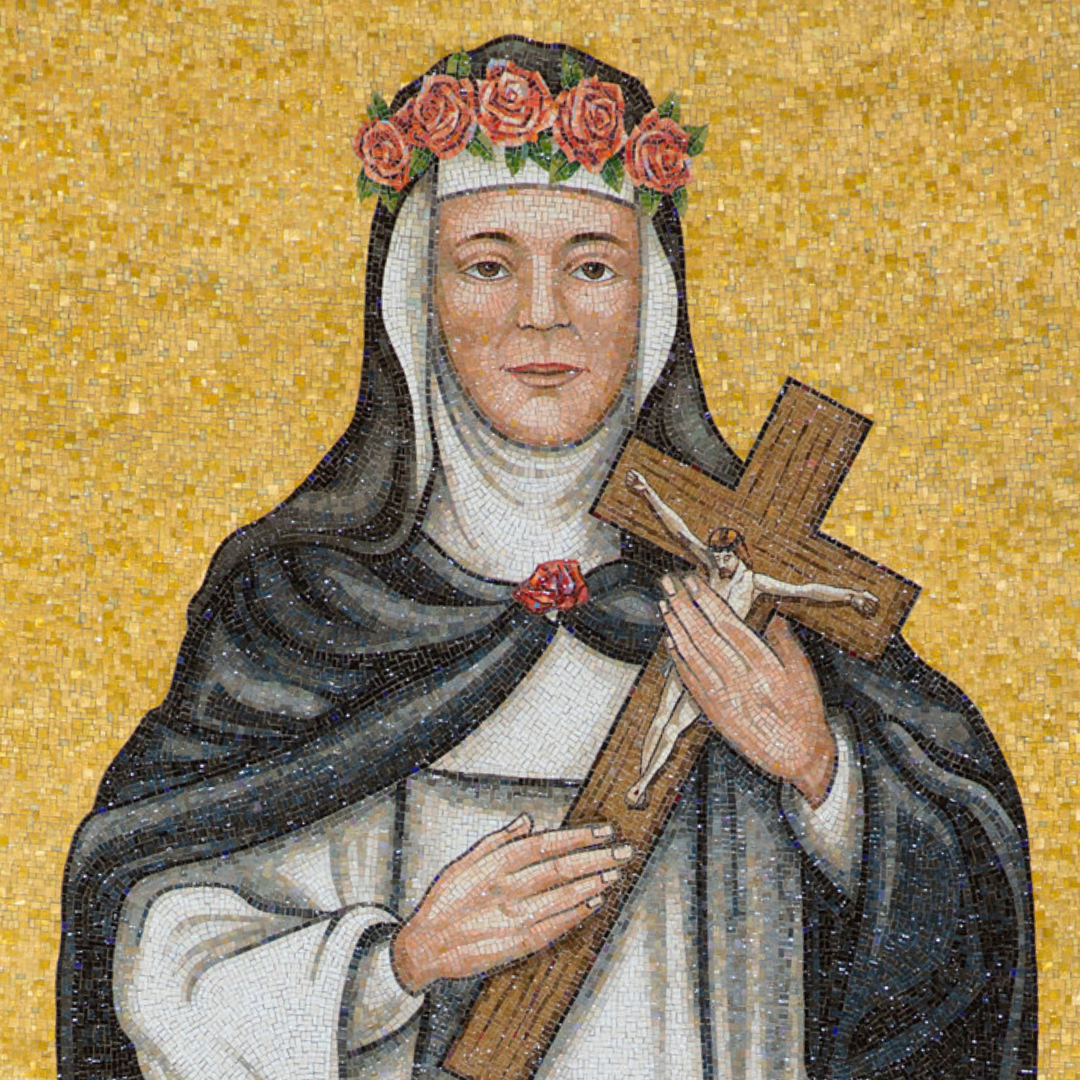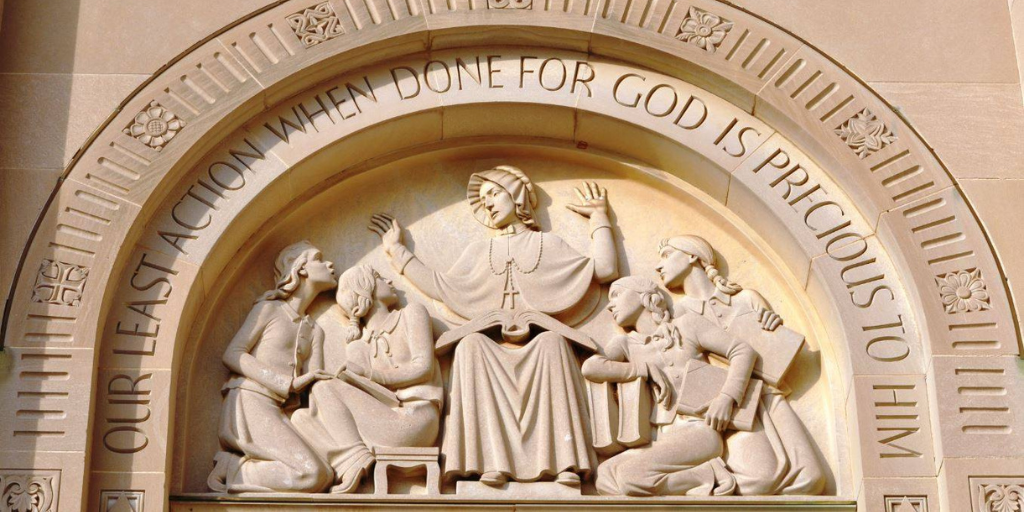
Over the centuries, women have played a critical role in furthering the kingdom around the world. From Frances Xavier Cabrini, who paved the way for women missionaries, to Joan of Arc, who used her skill in battle to restore the rightful heir to the French throne, their courage and resilience serve as shining examples to the faithful today.
This Women’s History Month, we invite you to discover 10 fun facts about women saints and learn how they responded in faith to God’s call in their lives, regardless of the consequences.
1. Frances Xavier Cabrini founded the first institute for female missionaries.
Growing up in Italy during a time when the Church had no female missionaries, Frances Xavier Cabrini felt God calling her to missions. When she was 27, she approached a local bishop about the matter, and at his suggestion, founded the first institute for female missionaries: the Missionary Sisters of the Sacred Heart. Within a decade, the institute was recognized by Rome. At age 30, she immigrated to New York City with six of her sisters to found orphanages in Little Italy. The Missionary Sisters of the Sacred Heart went on to found a variety of Catholic institutions throughout Europe and the Americas, including over 60 missions.
2. Mother Teresa’s given name was Gonxha Agnes Bojaxhiu.
Mother Teresa was born as Gonxha Agnes Bojaxhiu on August 26, 1910, in Skopje, Macedonia. When Gonxha was 18, she joined the Institute of the Blessed Virgin Mary in Ireland, where she was given the name Mary Teresa, after Thérèse of Lisieux. After her final Profession of Vows in 1937, she became known as Mother Teresa, and went on to found numerous charities during her lifetime, including the Missionaries of Charity, which currently operates in over 120 nations. Mother Teresa’s outstanding service caught the world’s attention, and several awards were presented to her in recognition of her efforts for the impoverished – most famously, the Nobel Peace Prize in 1979. The impact of Mother Teresa’s ministry was so significant that Pope John Paul II waited only two years after her death to beatify her.
3. Joan of Arc was a mere 13 years old when she received a vision urging her to aid France.
In the miraculous vision, the Archangel Michael and two women saints encouraged Joan to help restore Charles VII (at the time the Dauphin, the eldest son of the King of France) to the throne. At first, she was not taken seriously when she offered her assistance, but eventually the Dauphin accepted her help. Joan became a military commander, helping the struggling army break a siege on Orleans and leading them in a series of impressive victories. Not long afterwards, Joan was captured by the rebels of Burgundy and sold to England. There, she was imprisoned and subjected to constant interrogation as an ecclesiastical court tried to convict her of heresy. When the court could find no fault with her theology, she was eventually convicted for wearing men’s clothing.
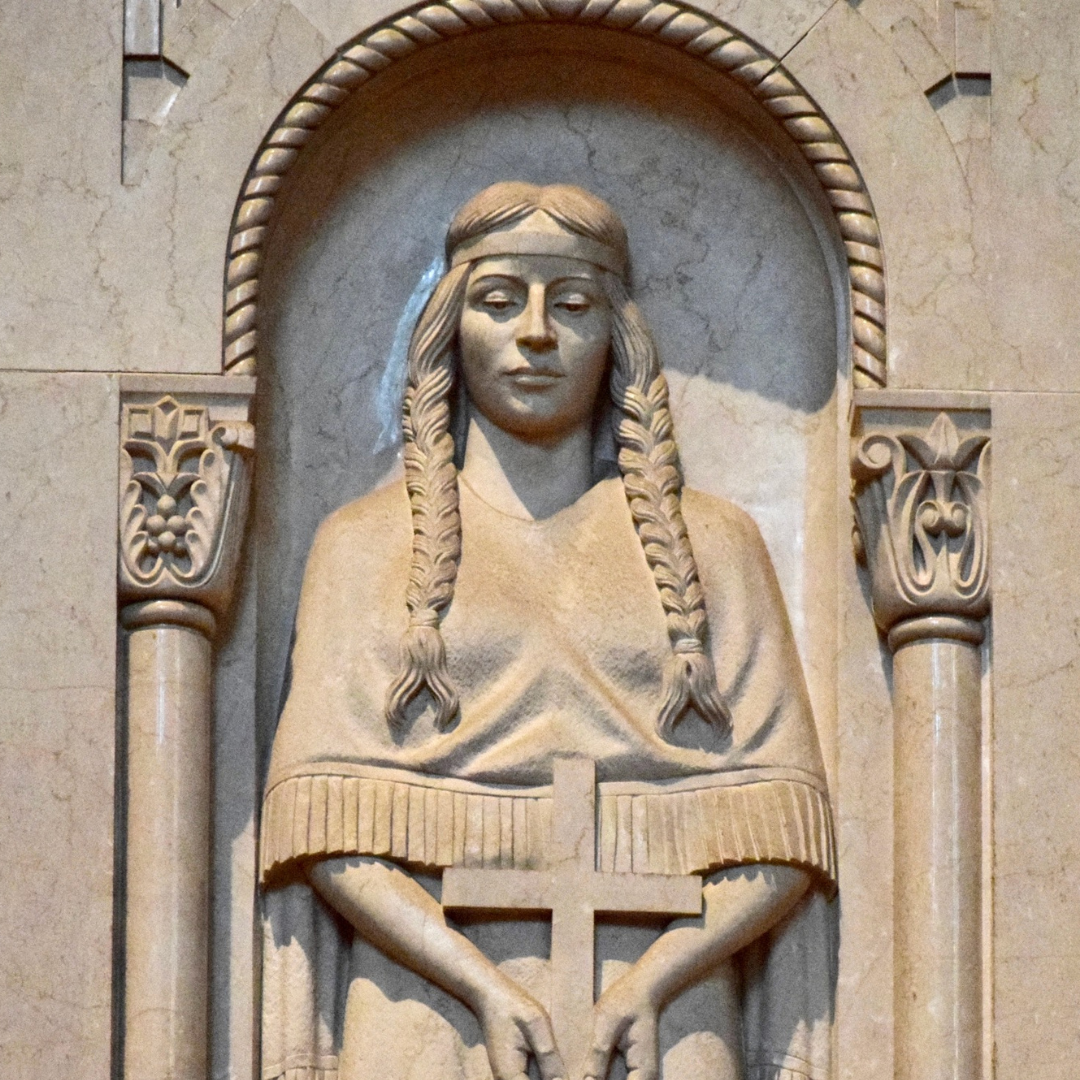 4. Kateri Tekakwitha was the first indigenous American to become a saint.
4. Kateri Tekakwitha was the first indigenous American to become a saint.
Born to a pagan Mohawk chief and a Christian Algonquian woman in 1656, Kateri was orphaned at the age of four when her family was killed by smallpox. She was then raised by her uncle, and accepted Christ at some point in her youth. After taking a vow of chastity at 19, Kateri began to experience harassment for her faith, and decided to move to the Mission of St. Frances Xavier. There, she grew in faith and holiness, spurred on by an unquenchable zeal for Christ, living in prayer and penitence. Kateri passed away at the young age of 24 on April 17, 1680, and in 2012, over 300 years later, she became the first Indigenous American to be canonized.
5. Catherine of Siena was the first woman to be granted the title “Doctor of the Church.”
In 1347, Catherine was the 25th child born to an Italian wool-dyer and cloth merchant. When Catherine was just 15, she became a lay Dominican. A withdrawn young lady, she lived a solitary life for three years, during which time she was inundated with a series of mystical visions. At age 20, she forsook her life of hermitage and dedicated herself to serving others. Catherine became a champion for truth, writing books and letters to authorities in the Church and government. She was soon recognized as a cunning diplomat, negotiating peace between armies and mediating family feuds, and calling out Church leaders for making decisions from personal and political motivations. Catherine passed away in 1380, and nearly 700 years later, Pope St. Paul VI granted her the title “Doctor of the Church.”
6. Elizabeth Ann Seton founded the parochial school system in the United States.
Born on August 28, 1774, on Staten Island, Elizabeth was raised in the Episcopalian church. After her husband died from tuberculosis in 1803, Elizabeth discovered Catholicism and converted in 1805. In 1809, she founded the Sisters of Saint Joseph, the first religious order in America. Later, it would come to be known as the Sisters of Charity of Saint Joseph’s. This order helped hospitals and orphans, but its most prominent work was in establishing the parochial education system in America.
7. Like the faithful young Israelites in the Old Testament, Shadrach, Meshach, and Abednego, Cecilia survived being thrown into a fiery furnace.
According to some accounts, Cecilia was born into an affluent Roman family in the days of the early Church. After her husband and his brother were arrested for burying Christian martyrs, they refused to renounce their faith and sacrifice to the Roman gods. The brothers were then scourged and beheaded, and Cecilia was arrested for burying their bodies and also sentenced to death. First, the authorities attempted to suffocate her by locking her in her bathroom and heating the furnace to an unbearable temperature, yet she was unharmed. Next, they attempted to behead her, slashing her neck three times without success. Cecilia lived for three days after the attack before she passed away from her wounds.
8. Jacinta de Marto was the youngest person to be canonized a saint.
Born on March 11, 1910, Jacinta de Marto was one of the three young shepherd children to witness the apparition of Our Lady of Fatima. When Jacinta was seven years old, the Blessed Mother appeared to her and her siblings and asked them to pray the Rosary every day. She appeared to the siblings five times after that, showing them a series of visions that culminated with the “Miracle of the Sun” on October 13, 1917. Unfortunately, soon after the last vision, Jacinta’s family contracted the flu in the epidemic of 1918, and she passed away shortly before her tenth birthday. On the 100th anniversary of the apparition of Our Lady of Fatima, Jacinta was canonized.
9. Felicity and Perpetua were sentenced to death and cast into an arena of wild animals, but the animals did not kill them.
Saints Perpetua and Felicity, a young noblewoman and her slave, lived in Carthage in A.D. 203, under the emperor Severus. When they were discovered professing the name of Christ, Perpetua and Felicity were sentenced to death. Yet, with God’s peace in their hearts, they remained serene in the face of their fate. The two women were thrown into an arena of wild animals, but they were not killed. Tragically, the emperor Severus then commanded that they be put to death by the sword.
10. Rose of Lima was so beloved that when she passed away, her funeral was delayed for multiple days to allow time for all the attendees to arrive.
Born as Isabel de Flores to Spanish parents in Peru in 1586, she was extraordinarily beautiful even as an infant, earning her the name “Rose.” Against her parents’ wishes, when she grew up, Rose took a vow of chastity and joined the Third Order of St. Dominic. Rose dedicated herself to prayer and used a room in her family’s house to care for the ill and elderly. The faithful flocked to her for advice, prayer, and healing, eager to experience the peace and respite she offered. When Rose passed away in 1617, so many people rushed to Lima for her funeral that it had to be delayed for some days.
Interested in learning about more inspiring women of faith throughout the ages?

